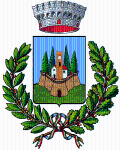Descrizione
Nominato fin dai primi anni del XII secolo nel Cartulario dell’abbazia di San Salvatore della Berardenga, il castello fu possesso di un ramo della dinastia dei Berardenghi; nel 1208 uno dei signori si impegnò a cedere una superficie perché i Senesi vi edificassero una torre e un palazzo che sarebbe servito come baluardo presidiato di difesa dai Fiorentini.
Nel 1554, di proprietà dei Bellarmati, il castello venne conquistato dalle truppe imperiali; nella seconda metà del Seicento vi è documentato un podere di proprietà delle monache del Paradiso, mentre nel Catasto del 1825 il complesso, con la villa attuale, una casa a pigione, una cappella, il granaio e il frantoio, risulta appartenere a Isabella Mocenni.
Oggi il castello è sede di una piccola azienda vitivinicola del Chianti Classico che pratica anche attività di agriturismo.
Dell’antica struttura, risalente perlopiù al XV secolo, resta un torrione quadrato intonacato con base a scarpa. Sul lato est è addossato un fabbricato che si prolunga sul lato nord, staccato dal torrione e probabilmente più antico. Al piano terra si trova la cantina, che presenta due ambienti coperti con volte a botte; al primo e secondo piano si aprono gli appartamenti di età moderna cui si arriva tramite una scala esterna. L’edificio è circondato da fabbricati rurali di varie epoche, oltre a un pozzo cilindrico a lastre di travertino con base e cornice modanate.
Nei pressi della costruzione si trova una piccola cappella, anch’essa di gusto neoclassico, dedicata a Santa Caterina. La cappella, situata vicino al castello, è a unica navata rettangolare con un altare e copertura a capanna; la facciata, con intonaco listato a finti conci, presenta un semplice portale sormontato da una finestra a lunetta e timpano triangolare.
English version:
Mentioned in the early 12th century in the Cartulary of the Abbey of San Salvatore della Berardenga, the castle was owned by a branch of the Berardenghi dynasty; in 1208 one of the lords of the clan agreed to cede part of the land on which the Sienese could build a tower and a palazzo that would serve as a manned defensive bulwark against the Florentines.
In 1554, then owned by the Bellarmati family, the castle was taken by imperial troops. In the second half of the 16th century documentation shows that there was a farm on the land belonging to the nuns of Paradiso, while the 1825 land registry records the complex with the current villa, a rental house, a chapel, a granary and an olive mill, listed as belonging to Isabella Mocenni.
Today the castle is the focal point of a Chianti Classico wine estate with agritourism facilities.
What remains of the mainly 15th-century antique structure is a plaster-surfaced square keep with a scarp at the base. Against the east side is a structure that stretches to the north, detached from the keep and probably older. The ground floor hosts the winery, with two barrel-vaulted rooms, while on the first and second floor are modern apartments reached via an exterior stair. The building is surrounded by farm outbuildings from various eras, as well as a cylindrical, travertine-slab well with molding at the base and cornice.
Near the construction is a small neo-classical chapel dedicated to Santa Caterina. The chapel has a single rectangular nave with an altar and a gabled roof; the façade, of plaster embellished to look like stone blocks, has a simple doorway topped by a lunette window and a triangular gable.
Modalità d'accesso
sempre aperto
Indirizzo
Punti di contatto
Ultimo aggiornamento: 4 marzo 2024, 12:14

